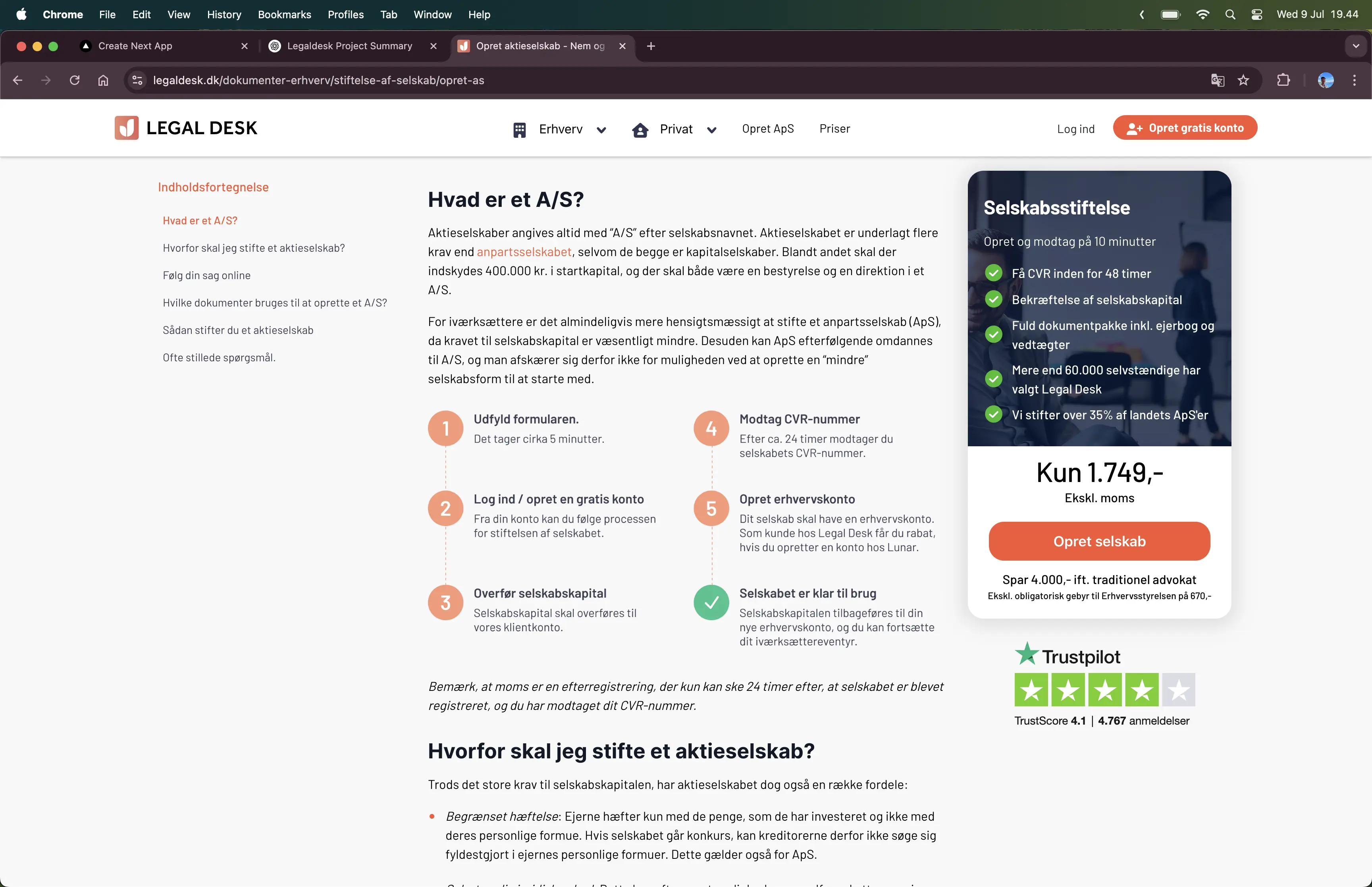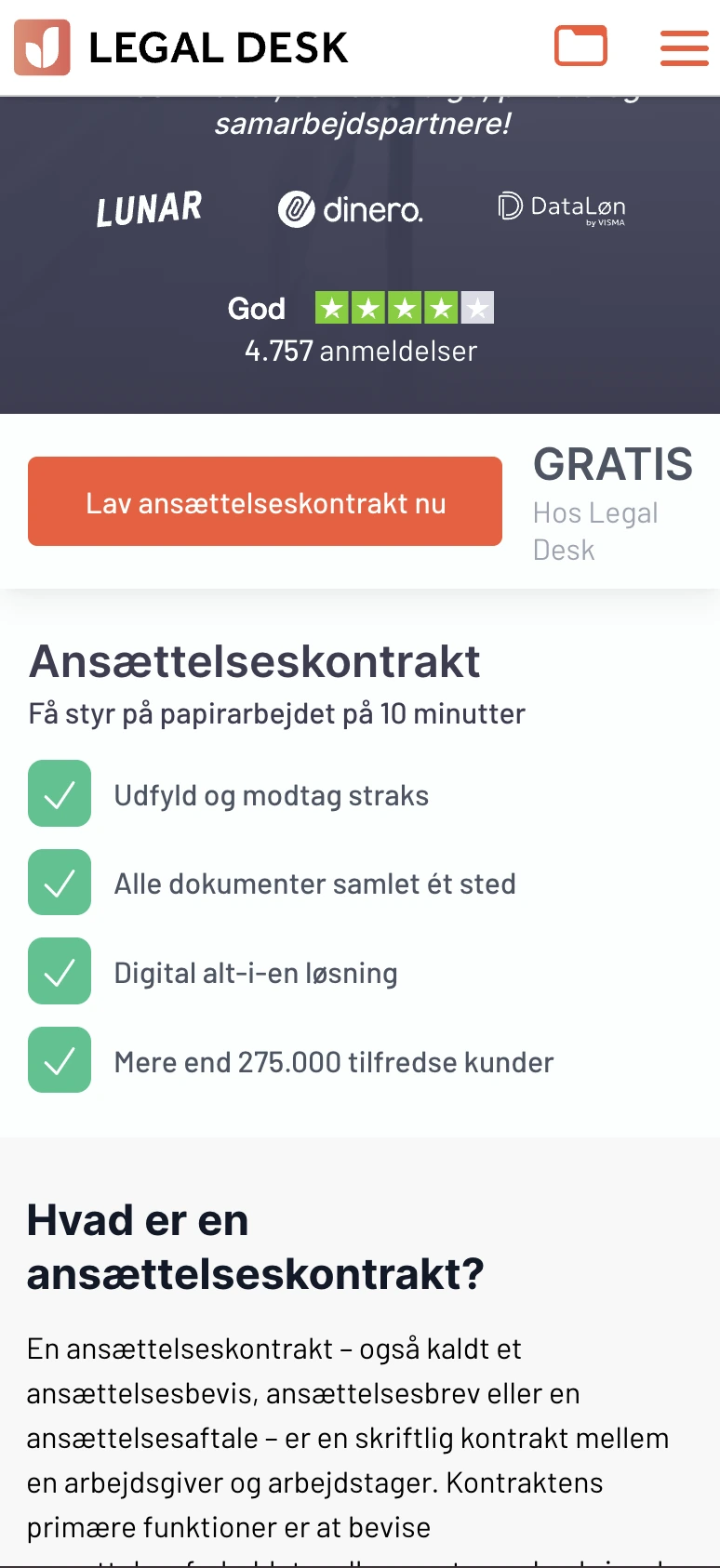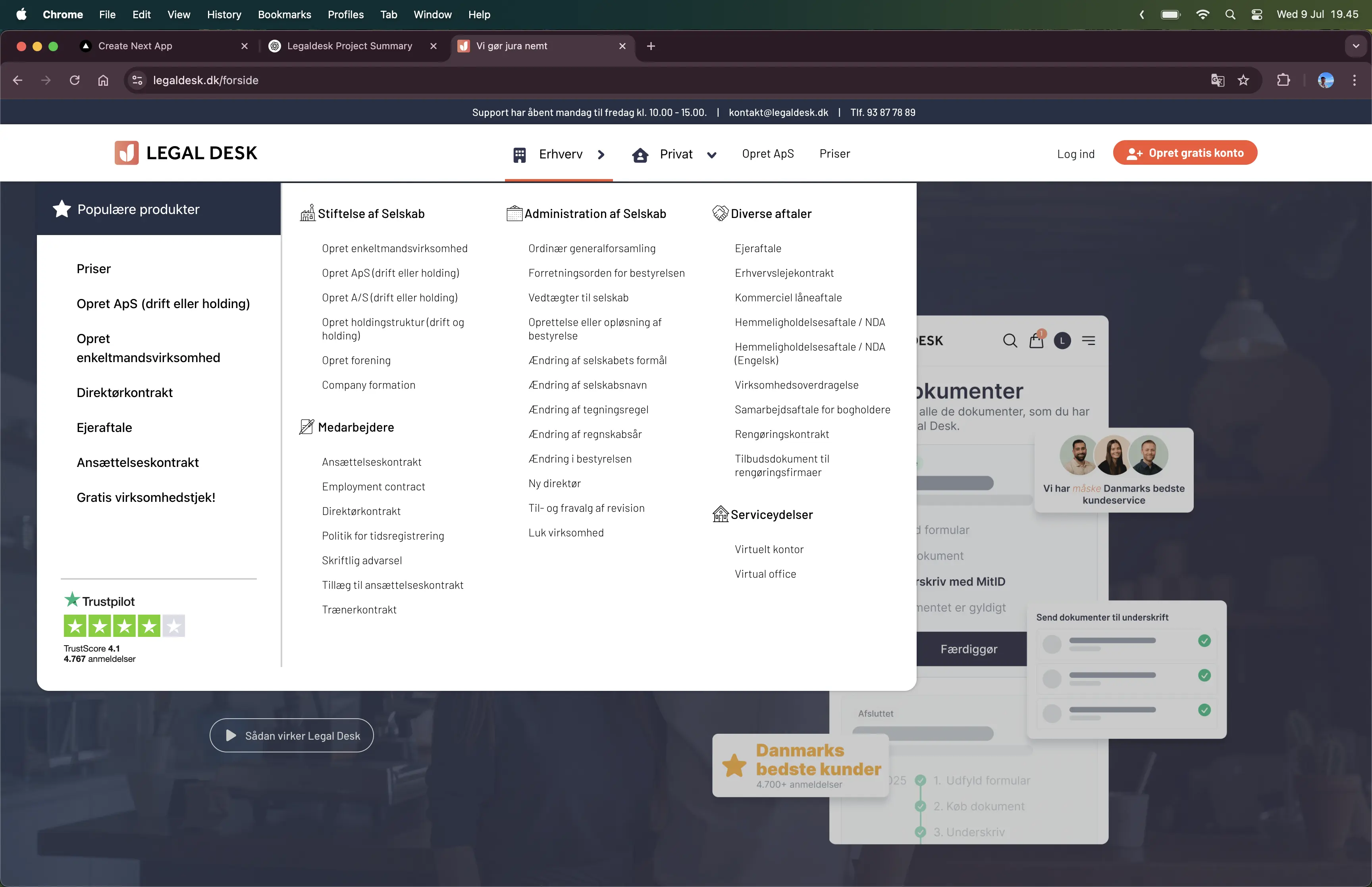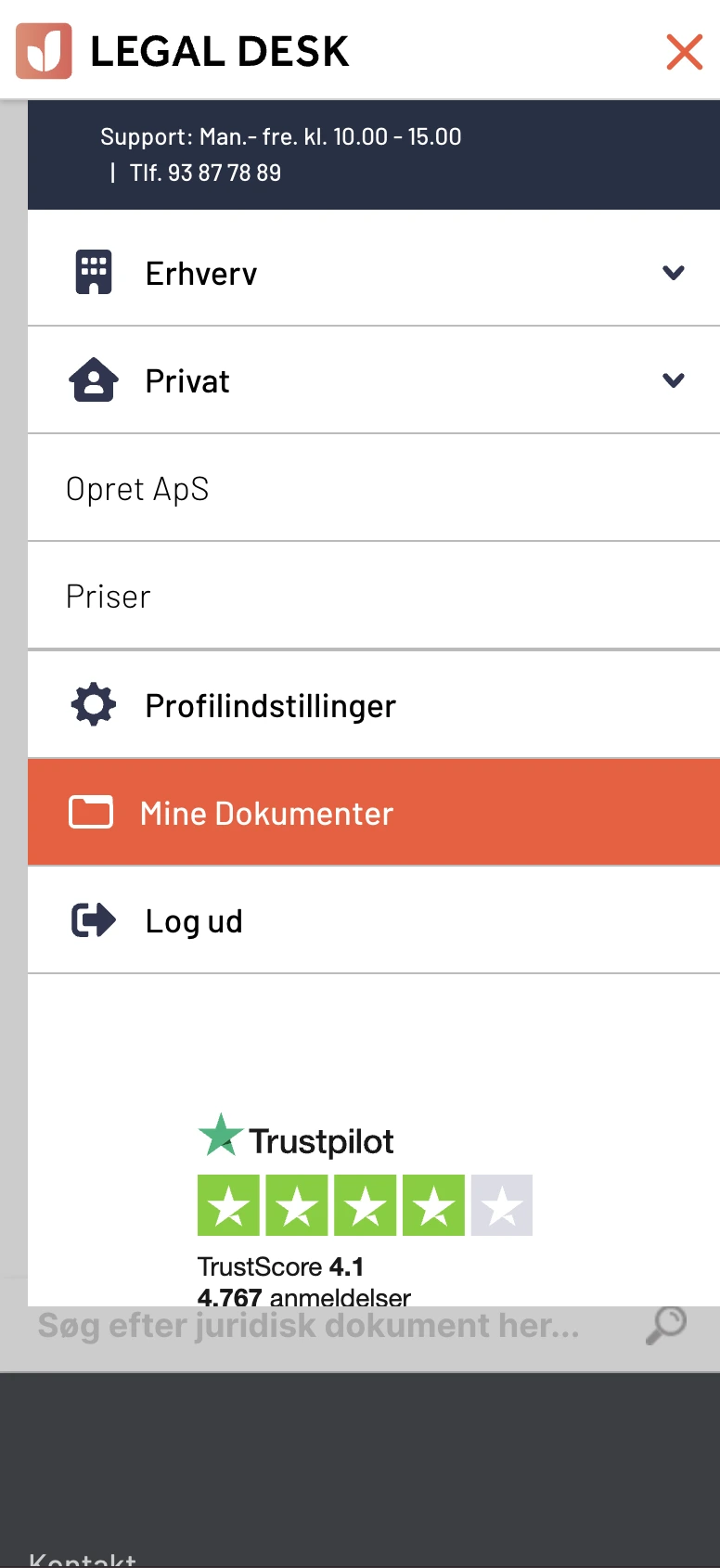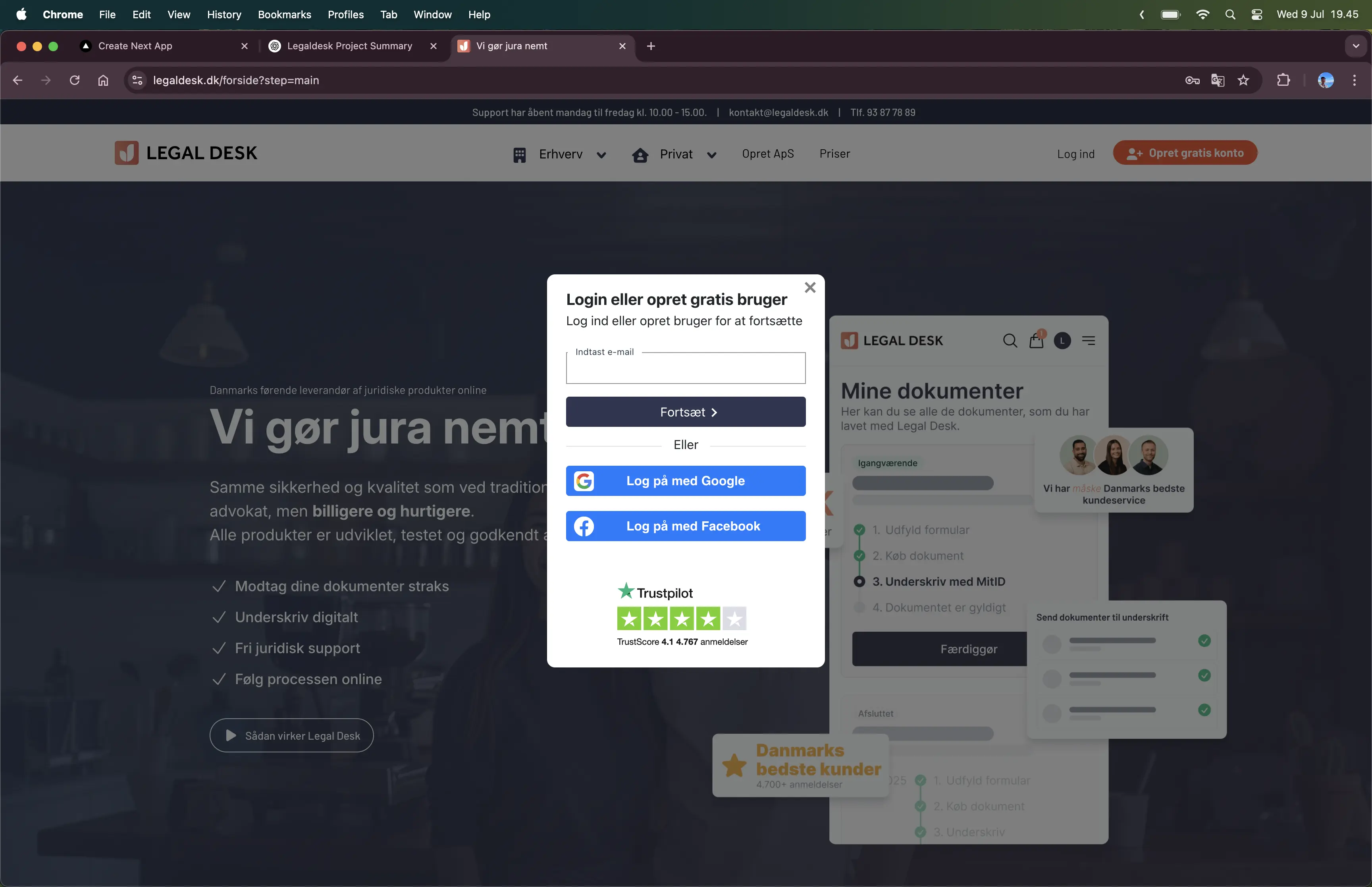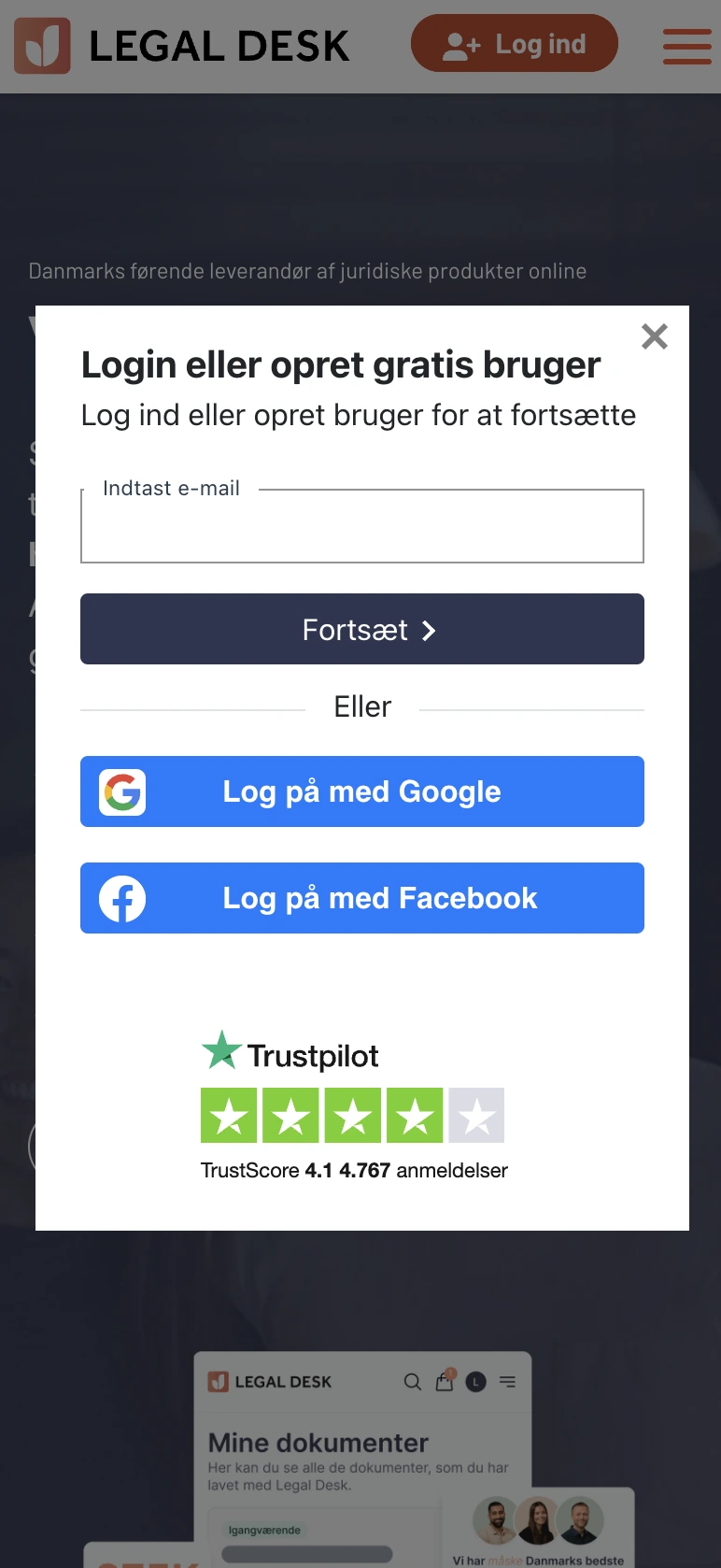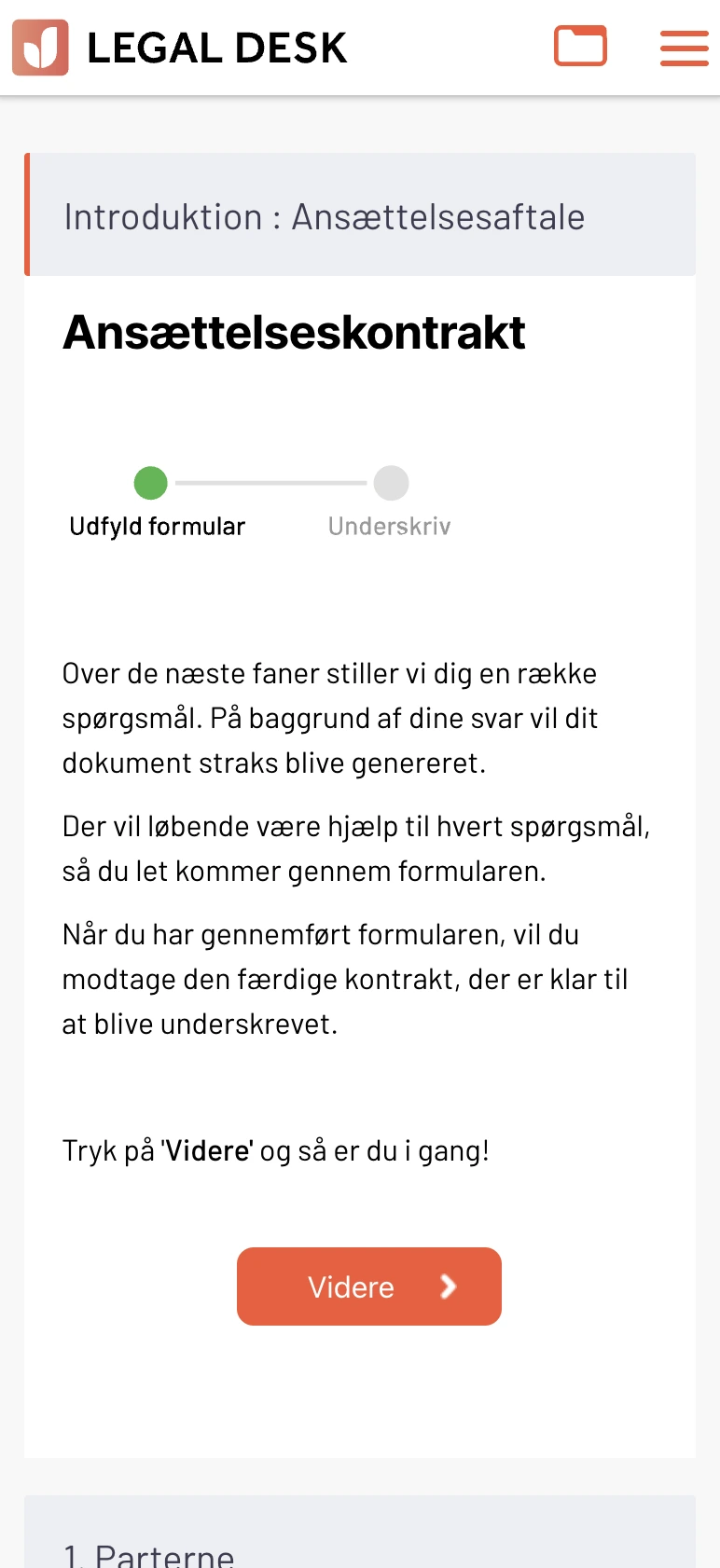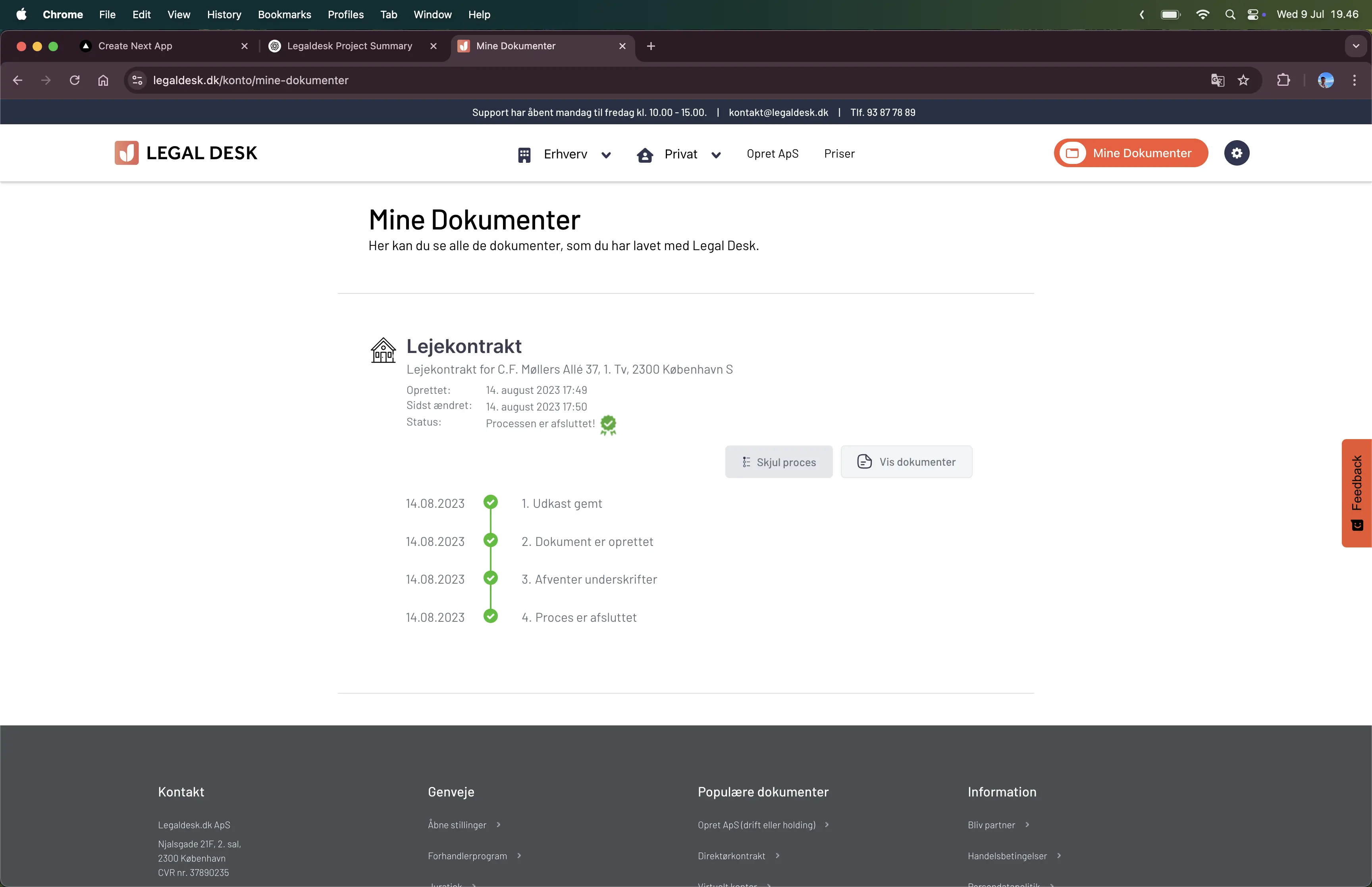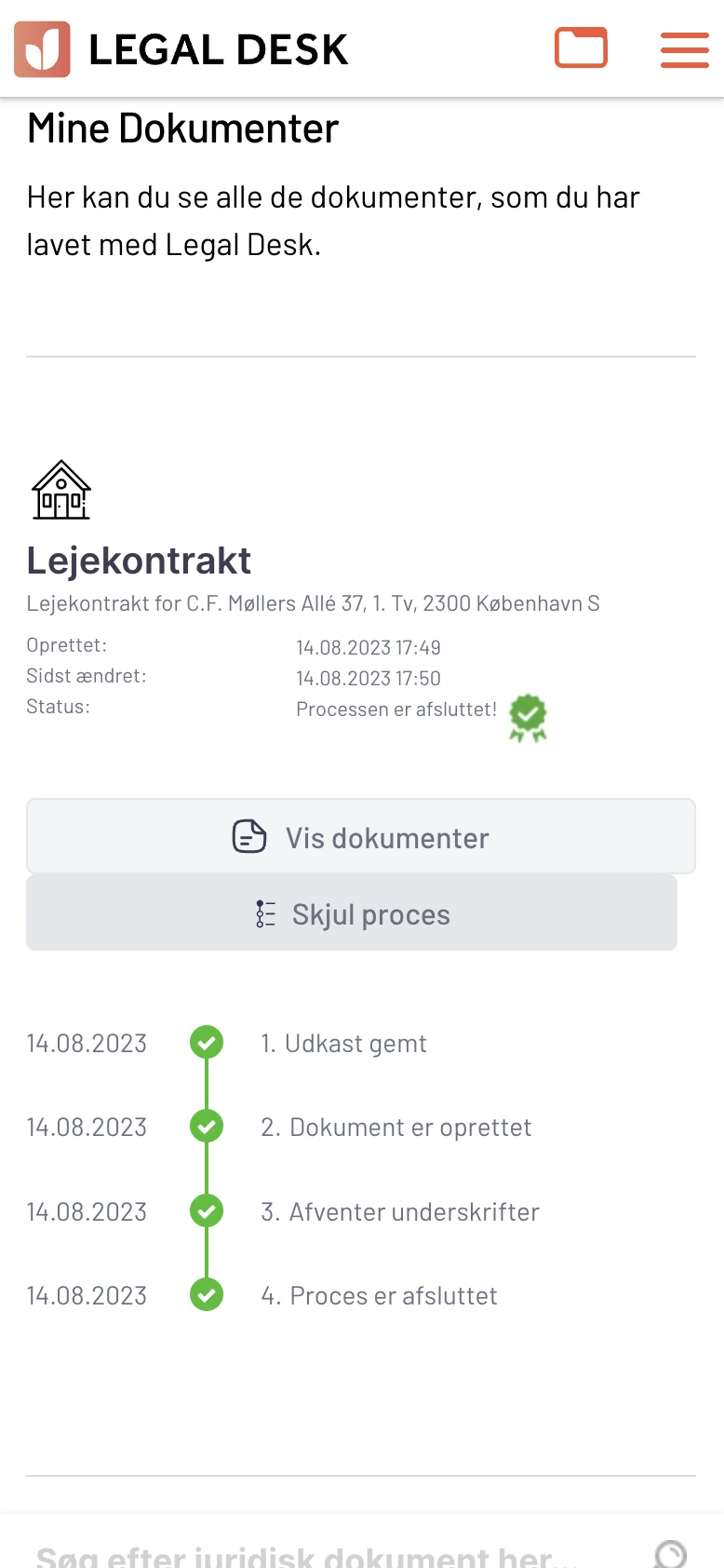🧠 Overview
At Legaldesk, I’ve been responsible for evolving and maintaining the frontend codebase while promoting code simplicity, reusability, and adherence to architectural best practices. Below are several key projects that highlight my contribution to the platform.
📄 Partner Landing Pages
Problem: Partners needed a branded landing page to direct their customers to Legaldesk offers, with flexibility for marketing teams to adjust content independently.
Solution:
I designed a dynamic system where each section of a landing page is modular and styled to work in any order or combination. I built reusable section components based on design patterns and integrated them into a CMS-driven layout editor.
Impact:
- Non-developers can now create and manage landing pages without dev input.
- New pages can be launched faster with minimal overhead.
📚 Product Resources Modal
Problem: Product pages required contextual legal info with an updated design and shared content across products.
Solution:
I created a floating modal component with consistent styling that pulls product-specific data dynamically. The backend structure allows the same content block to be reused on multiple product pages.
Challenge & Solution:
To avoid breaking changes, I layered the new resource modal on top of the legacy Umbraco content system, allowing gradual migration.
Impact:
- Content updates became faster and easier.
- Reduced duplication and maintenance time for marketing.
✅ End-to-End Testing with Selenium
Problem: We lacked automated testing to validate user flows before deployment.
Solution:
I introduced Selenium WebDriver into our .NET solution after evaluating testing tools. I prioritized automating key customer journeys like document purchase flows and then expanded to cover secondary flows.
Impact:
- Reduced deployment risk.
- Caught critical bugs before they reached production.
- Increased team confidence in CI/CD.
⚙️ Customer Service Automation
Problem: Our support team handled repetitive tasks manually.
Solution:
Building on the Selenium testing setup, I proposed and implemented automation via Remote WebDriver and a virtual machine. I exposed an internal API endpoint to trigger these flows, and results were stored in the DB and surfaced to support agents.
Impact:
- Saved significant time on manual tasks.
- Reduced errors in data entry.
- Freed up customer service for higher-value tasks.
🌱 Final Thoughts
This set of projects demonstrates how I approach frontend work: not just building interfaces, but designing systems that scale, empower non-developers, and reduce maintenance overhead. Whether it’s through code reuse, automation, or thoughtful UX tooling, my goal is always to make the product more maintainable and efficient.
